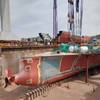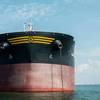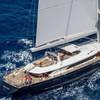Northrop Grumman to Evaluate Underwater Naval Transport
Most of the work will be divided between Northrop Grumman's Undersea Systems facility in Annapolis, Md., and Pennsylvania State University's Applied Research Laboratory in State College, Pa. Other organizations contributing to the team include the University of Minnesota, the University of Maryland, the Navy's Naval Undersea Warfare Center in Newport, R.I., and BBN Technologies of Cambridge, Mass.
"Supercavitation technology has great potential to increase the speed of underwater vehicles," said John Golombeck, vice president of Naval and Surface Systems for Northrop Grumman's Systems Development and Technology business unit. "By drawing on university research into supercavitation physics and adapting this technology for real-world use, we are opening up new naval transport opportunities." The contract comes with two 15-month options. Phase 2, worth up to $17 million, would include continued technology research at a larger scale and establish the detailed design of the demonstrator vehicle. Phase 3, worth up to $23.4 million, would include building a Demonstration Super-fast Supercavitating Transport (DSST) vehicle which would operate at 100 knots for durations of up to 10 minutes. The potential value of all three phases is $45.8 million.














